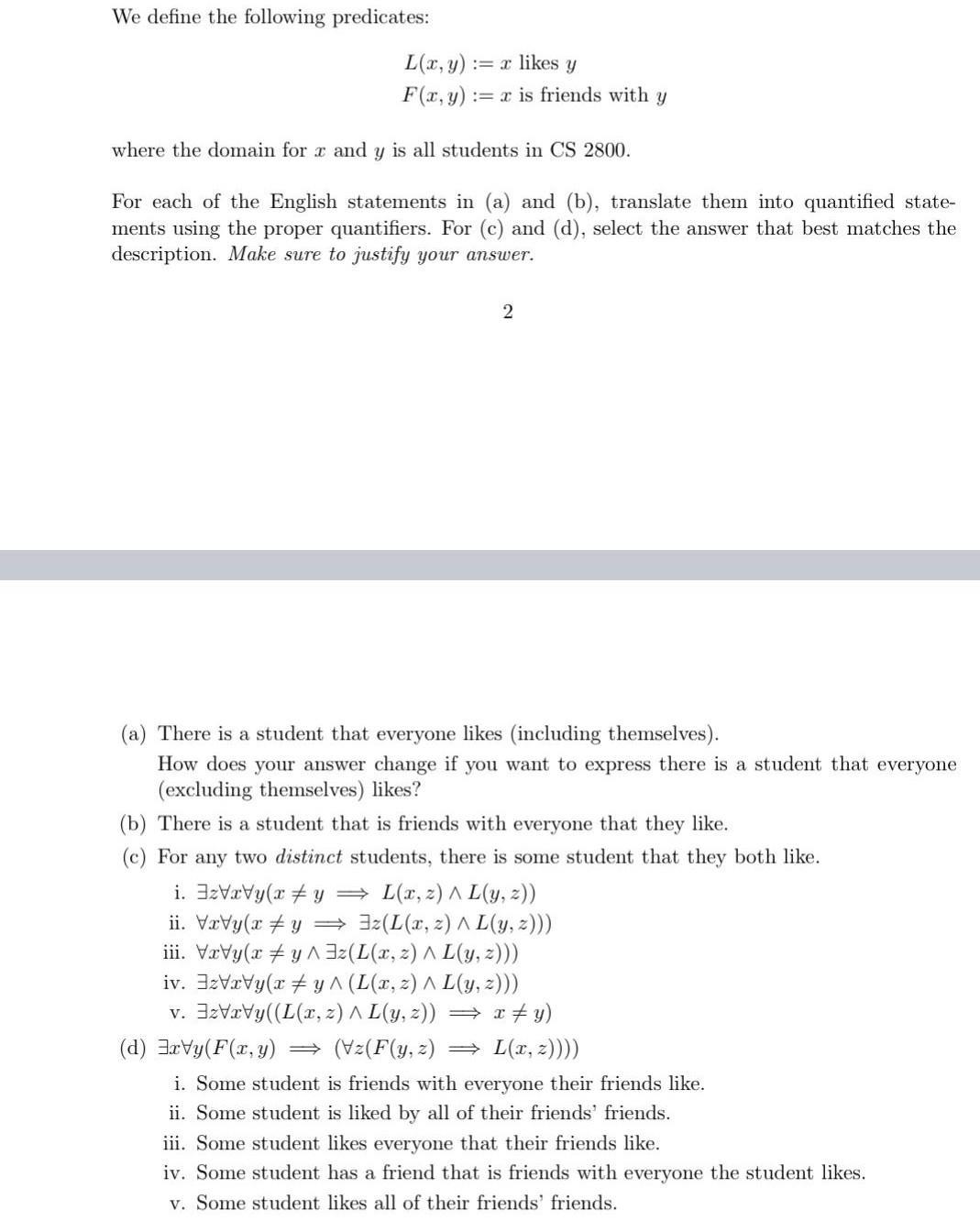Answered step by step
Verified Expert Solution
Question
1 Approved Answer
We define the following predicates: L(x, y)=x likes y F(x, y)=x is friends with y where the domain for x and y is all

We define the following predicates: L(x, y)=x likes y F(x, y)=x is friends with y where the domain for x and y is all students in CS 2800. For each of the English statements in (a) and (b), translate them into quantified state- ments using the proper quantifiers. For (c) and (d), select the answer that best matches the description. Make sure to justify your answer. 2 (a) There is a student that everyone likes (including themselves). How does your answer change if you want to express there is a student that everyone (excluding themselves) likes? (b) There is a student that is friends with everyone that they like. (c) For any two distinct students, there is some student that they both like. i. Vavy(xy L(x, z) AL(y, z)) ii. Vavy(xyz(L(x, z) ^ L(y, z))) iii. VxVy(xyz (L(x, z) ^ L(y, z))) iv. 3zVaVy(x + y^ (L(x, z) ^ L(y, z))) v. 2VxVy((L(x, z) ^ L(y, z)) xy) (d) xVy(F(x, y) (Vz(F(y, z) L(x, z)))) i. Some student is friends with everyone their friends like. ii. Some student is liked by all of their friends' friends. iii. Some student likes everyone that their friends like. iv. Some student has a friend that is friends with everyone the student likes. v. Some student likes all of their friends' friends.
Step by Step Solution
★★★★★
3.50 Rating (150 Votes )
There are 3 Steps involved in it
Step: 1

Get Instant Access to Expert-Tailored Solutions
See step-by-step solutions with expert insights and AI powered tools for academic success
Step: 2

Step: 3

Ace Your Homework with AI
Get the answers you need in no time with our AI-driven, step-by-step assistance
Get Started


